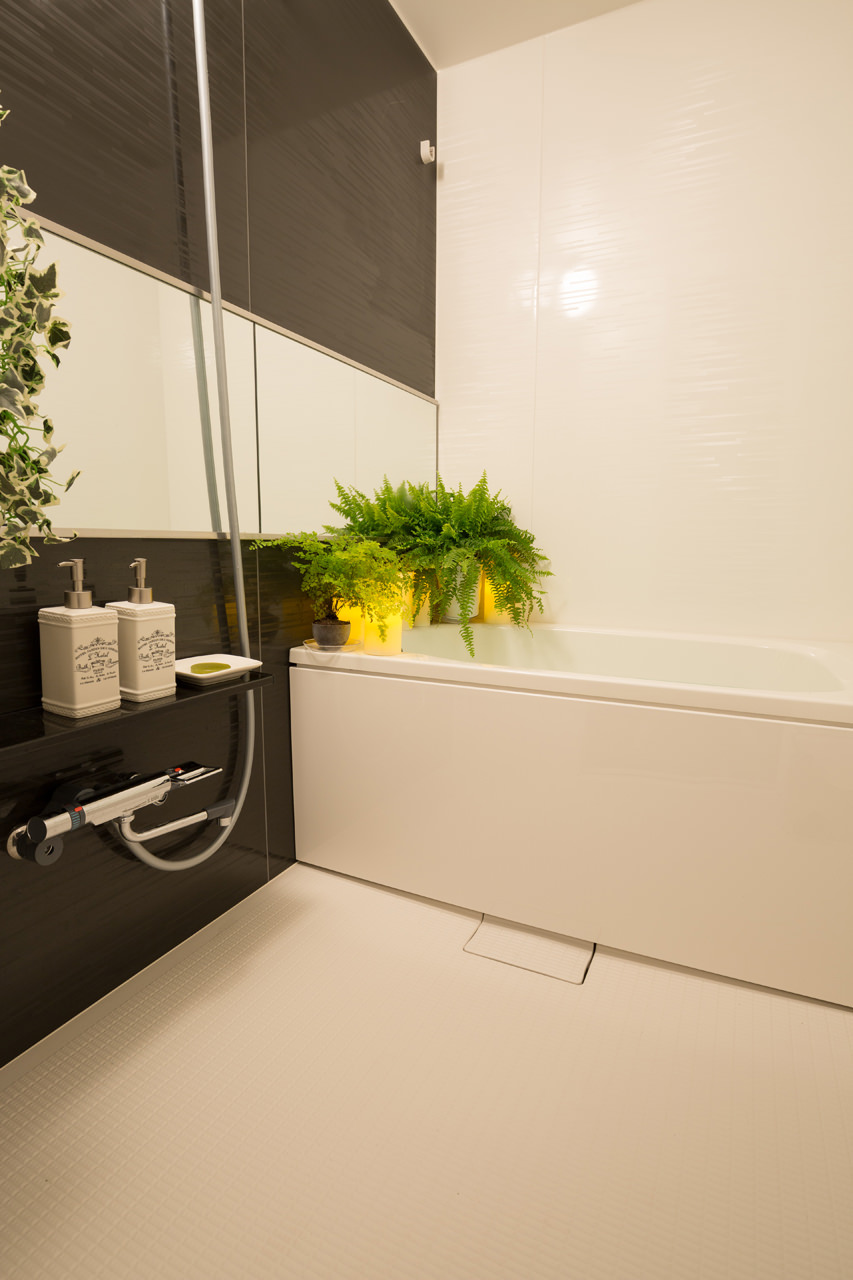waterproof tatami
Tatami materials for the shower — enjoy a refreshing, beautiful shower
Safety
- These mats are hygienic and prevent the occurrence of mites and mold.
- The mat covers are compliant with the Food Sanitation Act and deemed safe.
- They produce no toxic gases even in the case of when burned.
- They can be safely used in nursing environments, with children, the elderly and those suffering from allergies.
- They are optimal for highly air tight homes.
- Only carefully-selected raw materials sourced in Japan are used to manufacture this product in Japan.
Durability
- They have been developed for institutional purposes and are extremely strong, tough and long-lasting.
- They are difficult to scuff and can be wiped using a damp cloth, making cleaning easy.
- They are resilient against humidity and warping.
- They do not fade in the sun, and no color variation will occur when one mat is swapped out for another in the future.
- The best form of natural soft rush straw mats is recreated to provide these mats with longevity.
- They have 40 times the wear and tear resistance of a natural soft rush straw mat.
- They are water repellent, and any spilled drinks or food can be wiped up easily with no stain remaining.
Stylish and comfortable
- They have a beautiful appearance and provide an air of luxury.
- There is a rich variety of colors that can be matched with Western or Japanese décor.
- The modern Japanese design can go with Western or Japanese furniture.
- They have a natural texture with little shine.
- Despite being thin mats, they offer a surprising amount of cushion.
- They are made of materials and structured in a way that’s easy on skin making them comfortable in any season.
- They feel good under the feet and to the hands, and are smooth to the touch in summer, but not cold in the winter.
- They are thin mats, and don’t require any adjustments in floor height to be installed.
- They also allow wheelchair-accessible casing beads to be easily installed.
- Rich experience installing over 100 thousand mats annually
- Wide-variety of deliveries to ryokans and hotels (over 7,500 locations)
- Wide-variety of deliveries to kindergartens, nursery schools and nursing homes (over 5,000 locations)
Size variation
 300mm x 300mm Thickness of 3mm (Wheelchair-accessible type) Thickness of 5mm (Cushioned type) |
 450mm x 450mm Thickness of 3mm (Wheelchair-accessible type) Thickness of 5mm (Cushioned type) |
 900mm x 900mm Thickness of 3mm (Wheelchair-accessible type) Thickness of 5mm (Cushioned type) |
Specifications
Cover materials: Polypropylene, calcium carbonate
Base material: Polyester
Underside material: Absorbent acrylic
Special characteristics
Does not fray when cut (patented)
Flame retardant

| Patent number | #6829455 #5978412 |
| Flameproof capacity test number | E1160168 (3mm) E1160204 (5mm) |
Exempted from public notice (construction material not containing formaldehyde)
Physical properties
Formaldehyde emission test |
JIS A1901:2015 (Small chamber test) | Chemicals Evaluation and Research Institute, Japan | |
| Chemical analyzed | Atmospheric concentration | Emission speed |
|---|---|---|
| Formaldehyde | < 3㎍/m3 | < 3㎍/m2 |
Evaluation results: Atmospheric concentration and emission speed are within performance standards, and product ranked F☆☆☆☆ equivalent.
Wear and tear resistance test |
JIS A1453 Material mass change measured with wear test on construction materials and construction components (abrasive paper test) Test load: 5.20N Rotation: 500 rotations; 1,000 rotations |
Japan Testing Center for Construction Materials | |
| Units | TARTEC | General plastic floor sheet | |
|---|---|---|---|
| Wear mass | g/500 times | 0.168g | |
| g/1000 times | 0.294g | 0.5g |
Slip test |
JIS A1454 (Polymer type flooring material test) 17 Slip test | Japan Testing Center for Construction Materials | |
| Slip surface | Test direction | Maximum pull load (N) | Slip resistance coefficient |
|---|---|---|---|
| Rubber sheet | vertically (along tatami weaving) | 550 Pmax | 0.70 C.S.R |
| laterally (perpendicular to tatami weaving) | 586 Pmax | 0.75 C.S.R | |
| Socks | vertically (along tatami weaving) | 280 Pmax | 0.36 C.S.R |
| laterally (perpendicular to tatami weaving) | 332 Pmax | 0.42 C.S.R |
Sunlight resistance test |
JIS L0842 (Test of color durability against UV ray carbon arc lamp) | Chemicals Evaluation and Research Institute, Japan | |
| Test material | Natural tatami cover | TARTEC | |
|---|---|---|---|
| Color change (gradation) | After 50 hours exposure | 2 (Somewhat of a color change) | 5 (No color change) |
| After 100 hours exposure | 1 (Significant color change) | 5 (No color change) |
Test of electrostatic properties |
JIS A1455 | Kaken Test Center | |
| U value | 2.0 Grade III (U value 1.2—3.2 Little static electricity produced, and of a standard where static electricity can be prevented) |
|---|


